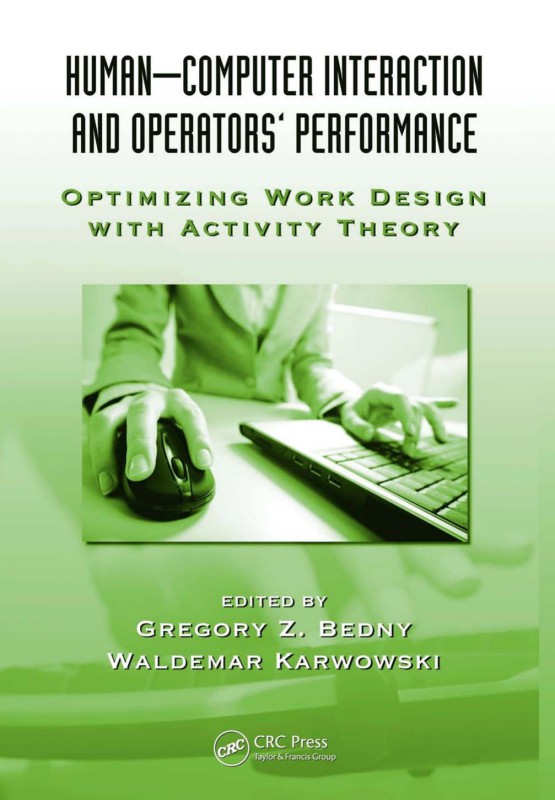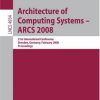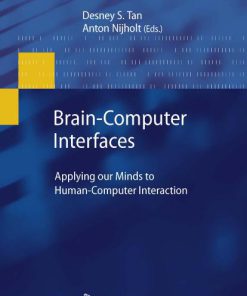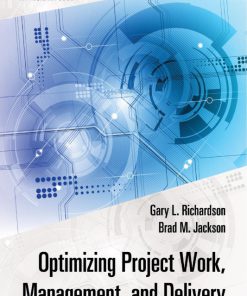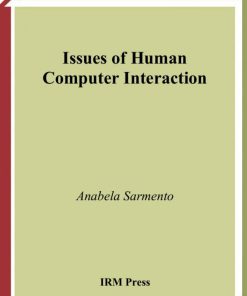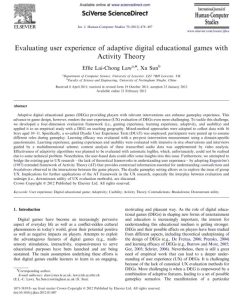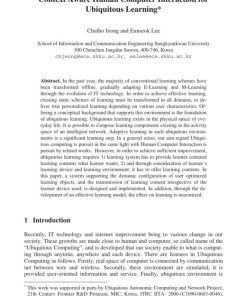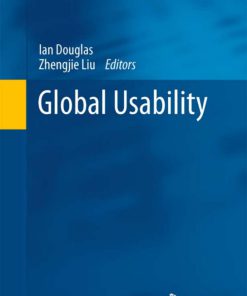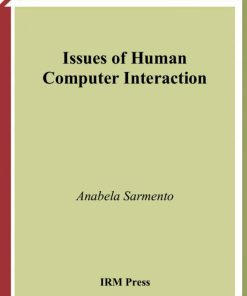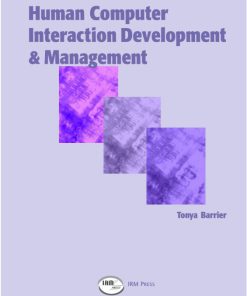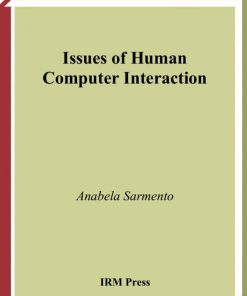Human Computer Interaction and Operators Performance Optimizing Work Design with Activity Theory 1st Edition by Gregory Z Bedny, Waldemar Karwowski ISBN 1439836264 9781439836279
$50.00 Original price was: $50.00.$25.00Current price is: $25.00.
Authors:Gregory Z. Bedny, Waldemar Karwowski , Tags:1439836264 978-1439836262 9781439836279 , Author sort:Gregory Z. Bedny, Waldemar Karwowski , Languages:Languages:eng , Published:Published:Jul 2010
Human Computer Interaction and Operators Performance Optimizing Work Design with Activity Theory 1st Edition by Gregory Z Bedny, Waldemar Karwowski – Ebook PDF Instant Download/Delivery. 1439836264, 9781439836279
Full download Human Computer Interaction and Operators Performance Optimizing Work Design with Activity Theory 1st Edition after payment
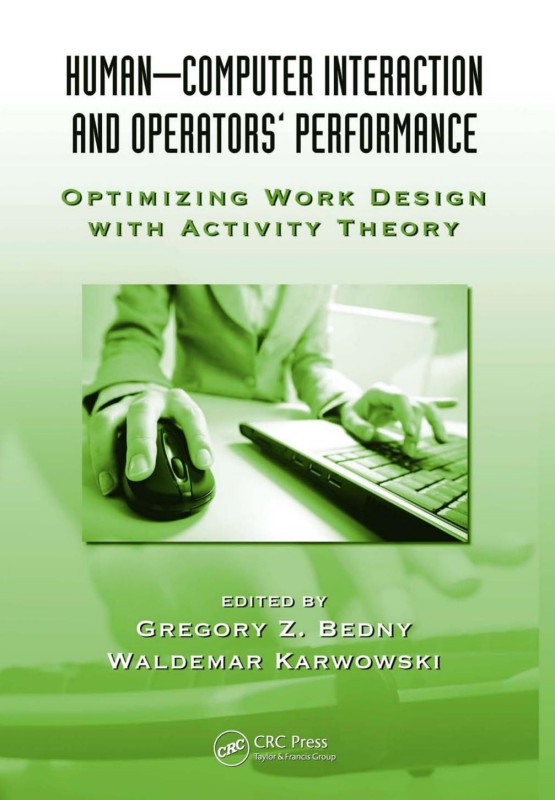
Product details:
ISBN 10: 1439836264
ISBN 13: 9781439836279
Author: Gregory Z Bedny, Waldemar Karwowski
A collection of works authored by leading scientists from the US and Russia, Human-Computer Interaction and Operators’ Performance: Optimizing Work Design with Activity Theory describes applied and systemic-structural activity theory as it is used to study human-computer interaction, aviation, design, and training. Important from a theoretical.
Human Computer Interaction and Operators Performance Optimizing Work Design with Activity Theory 1st Table of contents:
Section I Activity Theory in Studying Performance
1 Introduction to Applied and Systemic-Structural Activity Theory
1.1 Introduction
1.2 General Activity Theory Concepts
1.3 Applied Activity Theory
1.4 Systemic-Structural Activity Theory
1.5 Activity as a Self-Regulated System
1.6 Goal Concept: Comparative Analysis
1.7 Conclusion
References
2 The Relationship between External and Internal Aspects in Activity Theory and Its Importance in the Study of Human Work
2.1 Introduction
2.2 Personality Principle in the Study of Human Development
2.3 Rubinshtein’s External and Internal Aspects of Human Development
2.4 Leont’ev’s Internalization Concept
2.5 Vygotsky’s Internalization Concept
2.6 Activity as a Self-Regulating System
2.7 Concept of Internalization in Systemic-Structural Activity Theory
2.8 Practical Application
2.9 Discussion and Conclusion
References
Section II Human–Computer Interaction
3 Task Concept and Its Major Attributes in Ergonomics and Psychology
3.1 Introduction
3.2 Task Concept in Work Studies
3.3 Historic Overview of Goal Concepts in Psychology and Ergonomics
3.4 Anticipation from Activity Theory Perspectives
3.5 Concept of Goal in Activity Theory
3.6 Goal and Motivation in Task Analysis
3.7 Analysis of the Concept of Goal in HumanComputer Interaction Task Analysis
3.8 Conclusion
References
4 Task Concept in Production and Nonproduction Environments
4.1 Introduction
4.2 Meaning and Sense in Task Performance
4.3 Thought Process during the Performance of Computer-Based Tasks
4.4 Analysis of Task Performance in the Nonproduction Environment
4.5 Classification of Tasks and Their Basic Characteristics
4.6 Conclusion
References
5 Microgenetic Principles in the Study of Computer-Based Tasks
5.1 Introduction
5.2 Systemic-Structural Activity Theory as a Framework for the Study of Computer-Based Tasks
5.3 Experimental Design and Data Collection
5.4 Classification of Tasks According to Their Compatibility, Tool Arrangements, and Design of the Experiment
5.5 Performance Measures during Skill Acquisition
5.5.1 Measures of Motor Performance
5.5.2 Measures Based on the Mouse Movement Data
5.5.2.1 Time per Click
5.5.2.2 Time per Click
5.5.2.3 Distance Mouse Traversed per Time—Mouse Traversal Rate
5.5.3 Measures Based on Eye Movement Data
5.5.3.1 Visual Fixation Time in Different Areas of the Screen during Skill Acquisition
5.5.3.2 Total Number of Eye Visits to Different Areas per Click
5.5.3.3 Average Processing Time per Visit
5.5.3.4 Ratio of Eye Visits to the Object Area to the Number of Eye Visits to the Tool Area
5.6 Results
5.6.1 Preliminary Set of Experimental Study
5.6.2 Main Set of the Experimental Study of the Acquisition Process Based on the Motor Activity Analysis
5.6.2.1 Total Task Completion Time
5.6.2.2 Time per Click
5.6.2.3 Evaluation of Task Performance Based on Mouse Traversal Rate Measure
5.6.3 Main Set of Experiments in the Study of the Acquisition Process Based on the Eye Movement Data
5.6.3.1 Percentage of Dwell Time in the Tool Area
5.6.3.2 Percentage of Dwell Time in the Object Area
5.6.3.3 Aggregated Eye and Mouse Movement Measures
5.6.3.4 Errors Analysis
5.7 Discussion
References
6 Abandoned Actions Reveal Design Flaws: An Illustration by a Web-Survey Task
6.1 Introduction
6.2 General Characteristics of a Web-Survey Task
6.3 Description and Qualitative Analysis of the Web-Survey Task
6.4 General Principles of Algorithmic Description
6.5 Algorithmic Description of the Web-Survey Task
6.6 Analysis of Abandoned Actions
6.7 Conclusion
References
Section III Evaluation of Computer Users’ Psychophysiological Functional State
7 Optimization of Human–Computer Interaction by Adjusting Psychophysiological State of the Operator
7.1 Introduction
7.2 Method of Adjusting the Operator’s Psychophysiological State
7.3 Experimental Research on the Effect Produced by the Psychophysiological State Laserpuncture Adjustment on Better Interface between Humans and Computers
7.4 Approbation and Prospects of Developing Laserpuncture-Based Human–Computer Interface Performance Enhancement Methods
7.5 Conclusion
References
8 Psychophysiological Analysis of Students’ Functional States during Computer Training
8.1 Introduction
8.2 Description of the Experiment
8.3 Evaluation of Students’ Individual Differences
8.3.1 Definition of Students’ Professional Preferences
8.3.2 Degree of Development of Logical Thinking
8.3.3 Identifying the Individual Features of the Subjects’ Nervous Systems
8.4 Methods of Analyzing Students’ Functional State during the Experiment
8.4.1 Test to Measure the Ability to Memorize Numbers
8.4.2 Test “Number Square”
8.5 Results
8.6 Discussion
References
Section IV Work Activity in Aviation
9 Characteristics of Pilots’ Activity in Emergency Situations Resulting from Technical Failure
9.1 Introduction
9.2 Functional Analysis of Activity
9.3 Emotional-Motivational Aspects of Self-Regulation
9.4 Structure of the Pilots’ Dynamic Mental Model
9.5 Basic Characteristics of Information Presented in an Emergency Situation
9.6 Pilots’ Actions during Display of Uncertain Information with a High Attraction Effect
9.7 Pilot’s Strategies of Activity while Receiving Visual Information
9.8 Discussion
References
10 Functional Analysis of Pilot Activity: A Method of Investigation of Flight Safety
10.1 Introduction
10.2 Pilot-Aircraft-Environment as a System
10.3 Study of Pilot Activity from the Functional Analysis Perspectives
10.4 Examples of Functional Analysis of a Pilot’s Activity
10.4.1 Method
10.4.2 Results
10.5 Functional Analysis of Emergency Situations
10.6 Experimental Study of an Emergency Situation in a Real Flight
10.7 Conclusion
References
11 Methodology for Teaching Flight- Specific English to Nonnative English–SpeakingAir-Traffic Controllers
11.1 Introduction
11.2 Psychological Analysis of Air-Traffic Controllers’ Activity
11.2.1 General Characteristics of Air-Traffic Controllers’ Activity
11.2.2 Operative Thinking and Working Memory
11.2.3 Characteristics of Attention in Air-Traffic Controllers’ Activity
11.2.4 Emotional Factors in Air-Traffic Controllers’ Activity
11.2.5 Fatigue in Air-Traffic Controllers’ Activity
11.3 Functional Analysis of the Air-Traffic Controllers’ Activity
11.3.1 Dynamic Mental Model
11.3.2 Objective Meaning and Subjective Sense
11.4 Activity Approach to Training
11.4.1 General Principles of the Training Process
11.4.2 Self-Regulation Theory of Learning
11.4.3 Analysis of Typical Errors in Radio Communication in the Training Process
11.5 Games as a Method of Training
11.5.1 Requirements of Game Scenarios
11.5.2 General Characteristics of a Game Process
11.5.3 Basic Psychological Characteristics of the Games
11.5.3.1 Strict Regulations and Time Constraints for Testing and Evaluation
11.5.3.2 Extra Psychological Load
11.5.3.3 Gradual Increase in Psychological Load
11.5.4 Components of the Games
11.5.5 Designing Problem Situations
11.6 Requirements of Knowledge in English
11.6.1 Fragment of Radio Communication
11.7 Methods of Evaluation
11.8 Examples of Past Radio Communications for Analysis
11.9 Conclusion
References
Section V Special Topics in the Study of Human Work from the Activity Theory Perspective
12 Functional Analysis of Attention
12.1 Introduction
12.2 Experimental Method
12.2.1 Review of the Existing Experimental Methods to Study Attention
12.2.2 Procedure
12.2.3 Design
12.3 Results
12.4 Interaction of Complex Reactions
12.5 Mechanisms of Attention and Strategies of Information Processing
12.6 Model of Attention
12.7 Conclusion
References
13 Real and Potential Structures of Activity and the Interrelationship with Features of Personality
13.1 Theoretical Aspects
13.2 Existing Classifications of Professions
13.3 Development of a Unified Classification of Professions in the Civilian and Military Areas Derived from an Analysis of the Structure of Activity
13.4 Conclusion
References
14 Application of Laser-Based Acupuncture to Improve Operators’ Psychophysiological States
14.1 Introduction
14.2 Theoretical, Methodological, and Practical Substantiation of Applying Laser-Based Acupuncture
14.3 Experimental Research on the Optimization of the Operators’ PPS Using Laser-Based Acupuncture
14.4 Conclusion
References
15 Information Processing and Holistic Learning and Training in an Organization: A Systemic-Structural Activity Theoretical Approach
15.1 Introduction
15.2 Pragmatic Case Study of Technical Support Agents
15.3 Critical Analysis of the Case Study
15.4 Learning and Training
15.4.1 General Methodological Issues
15.4.1.1 When to Teach
15.4.1.2 What to Teach
15.4.1.3 How to Teach
15.4.2 Application of Algo-Heuristic Theory: The “What” Issue
15s.4.3 Application of Components Display Theory: The “How” Issue
15.4.4 Summary
15.5 Systemic-Structural Methodology of Analysis
15.6 Conscious Goal-Oriented Systems for Learning and Training
15.7 Conclusion and Future Work
References
16 Effort, Fatigue, Sleepiness, and Attention Networks Activity: A Functional Magnetic Resonance Imaging Study
16.1 Visual Perception and Attention
16.2 Diurnal Variability of Human Cognitive Processes
16.3 Neuronal Attentional Networks and Saccadic Eye Movements
16.4 Workload, Mental Fatigue, and Effort
16.5 Fatigue and Sleepiness
16.6 Effort, Fatigue, and Sleepiness Study
16.6.1 Participants
16.6.2 Experimental Procedure
16.6.3 Subjective Assessments
16.6.4 Saccadic Task Description
16.6.5 Data Acquisition
16.6.6 Data Analysis
16.7 Results
16.7.1 fMRI Measurements
16.7.2 Subjective Reports on Fatigue and Sleepiness
16.7.3 Subjective Reports on Fatigue and Sleepiness and fMRI Measurement—Correlation Analysis
16.8 Summary
People also search for Human Computer Interaction and Operators Performance Optimizing Work Design with Activity Theory 1st:
human-computer interaction and operators performance
human-computer interaction definition
human-computer interaction meaning
human-computer interactions
human-computer interaction an empirical research perspective pdf
You may also like…
eBook PDF
Issues of Human Computer Interaction 1st Edition by Anabela Sarmento ISBN 1591402352 9781591402350
eBook PDF
Issues of Human Computer Interaction 1st Edition by Anabela Sarmento ISBN 1591402352 9781591402350
eBook PDF
Issues of Human Computer Interaction 1st Edition by Anabela Sarmento ISBN 1591402352 9781591402350

